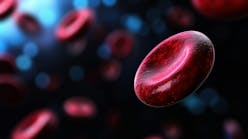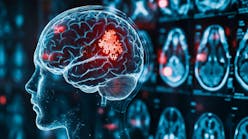Alzheimer’s disease (AD) is the most common form of dementia, mainly characterized by memory loss as well as cognitive, emotional, and social deficits that progressively interfere with daily life. The prevalence is estimated to be 2% in the age group below 65, and increases to about 20% in the 75-to-84 age group. In 2012, the World Health Organization predicted that today’s population of 35.6 million people with Alzheimer’s worldwide will rise to at least 65 million people by 2030. Therefore, AD and other forms of dementia impose great economic costs on society. More than $600 billion is spent globally on the treatment and care of people with dementia.
Early- and late-onset AD
The cause of AD is still under debate. It has been shown that early-onset AD, accounting for about 5% of total AD cases, afflicts people at the age of 30 to 60, and is mainly caused by mutations of tree genes coding for the amyloid precursor protein (APP) and presenilin 1/2 on chromosomes 21, 14, and 1, respectively.1 Mutations within these genes affect a common pathogenic pathway in APP synthesis and proteolysis, which leads to excessive production of amyloid ß peptides. Furthermore, genetic studies show that simple duplication of the APP gene, as it occurs in Down syndrome (trisomy 21), leads to a 1.5-fold increase in the expression of APP, increasing the risk of developing dementia with the complete AD-associated neuropathology.2
Most cases of Alzheimer’s are the late-onset form, which develops after age 60. The causes of late-onset Alzheimer’s are not as defined as those for early-onset AD, but they likely include a combination of genetic, environmental, and lifestyle factors that influence a person’s risk for developing the disease. Among these, the APOE ε4 allele has been identified as a major risk factor associated with poor neural repair function and AD.3 Genome-wide association studies have identified further genes, including BIN1, CLU, PICALM, and CR1, that may increase a person’s risk for late-onset Alzheimer’s.4 Besides genetic risk factors, epigenetic changes can be induced by environmental agents such as mercury, lead, and pesticides in early developmental stage, that lead to increased production of Aß not before maturity and initiating AD thereafter.5
On average, life expectancy following diagnosis of late-onset AD is seven to 10 years. The course of disease can be subdivided into three phases, with mild, moderate, and severe cognitive impairment. Although a cure for the disease is not yet possible, an early diagnosis of Alzheimer’s offers important benefits. If patients are diagnosed at an early stage, current approaches in treatment are most effective in maintaining mental function, managing behavioral symptoms, and slowing or delaying the symptoms of disease. Patients and their families can decide early enough about care, living options, and support services, as well as financial and legal matters. In consequence, appropriate diagnostic approaches must be sensitive enough to detect the disease early in the mild cognitive impairment (MCI) phase, and they should have the diagnostic accuracy to discriminate MCI from AD, and AD from other forms of dementia. Ideally, they should also estimate the progression rate from MCI to AD. In an approach to personalized medicine, specific diagnostic tests may also offer the opportunity to estimate the individual response to specific pharmacological treatment.
The diagnostic landscape
Diagnostic approaches to AD include non-invasive imaging techniques (MRI, CT, PET, SPECT) and neuropsychological methods, while invasive techniques include immunohistochemistry from biopsies and quantification of biomarkers from body fluids. Biomarkers can be analyzed from cerebrospinal fluid (CSF), full blood, serum, plasma, urine, and sputum. Recent studies combining results of MRI and CSF biomarkers showed an accuracy of 91% in distinguishing AD from healthy controls and 77% in distinguishing MCI from controls.6,7
Hallmarks of AD pathology are extracellular senile plaques formed by the accumulation of ß-amyloid peptides (Aß) in the brain parenchyma and neurofibrillary tangles composed of abnormal hyperphosphorylated tau filaments. Aß is a 38-to-43 amino-acid peptide resulting from proteolytic cleavage of amyloid precursor protein (APP). Extracellular deposits are mostly built by the least soluble Aß1-42 peptide. Based on these pathological findings, recent evaluation of biomarkers has been focused on tau and Aß. It has been shown in CSF of AD patients that total tau (t-tau) and phosphotau (p-tau) concentrations are increased, probably due to release from damaged neurons, and levels of Aß1-42 are reduced as a result of accumulation in insoluble plaques.8,9 Furthermore, ratios of tau/Aß1-42 and p-tau/Aß1-42 increase when comparing normal controls with MCI, and further increase when comparing MCI and AD. Interpretation of CSF biomarker signature allows AD detection in the ADNI cohort with 96% sensitivity and 77% specificity.10 Another study found the Aß1-42/tau to be the best parameter for prognosis of transition from MCI to AD, with 81% sensitivity and 95% specificity.11
Although analysis of CSF biomarkers has been shown to be a valuable tool in diagnosis of AD and discrimination from MCI, the collection of cerebrospinal fluid is an invasive procedure that requires skilled personnel. Therefore, analysis of biological fluids such as plasma would facilitate the sample collection procedure. However, results from biomarker analysis of plasma were not yet as convincing as from CSF to differentiate AD from MCI and healthy individuals. It was shown that conversion to AD is accompanied by a decline in plasma Aß1-42 and a decrease of Aß1-42/ Aß1-40 ratio.12 One reason for ambiguous plasma results may be the much lower plasma concentration of tau and Aß compared to serum, which makes higher demand on assay sensitivity. Furthermore, Aß binds to plasma proteins such as apolipoprotein E, transthyretin, complement proteins, albumin, and Aß-specific auto-antibodies, thereby masking epitopes that may interfere with the ELISA immunoreaction.13,14 In addition, Aß-turnover can be modulated, for example by glucose, insulin, or gangliosides.15 In general, the steady-state level of Aß depends on the balance between production and clearance. Transport of Aß across the blood-brain barrier is mediated by receptors such as RAGE or LRP, enzymatic degradation is achieved by neprilysin and insulin-degrading enzyme, and Aß aggregation is prevented by anti-Aß antibodies and Aß-binding proteins.16 In vitro dissociation of Aß from its binding proteins before quantification could facilitate quantification of total Aß and Aß-specific auto-antibodies in order to differentiate MCI from AD or normal.17
A multitude of commercial and home-brew sandwich assays are available to quantify Aß in CSF and plasma. Microsphere-based multiplex technology even allows the simultaneous analysis of CSF markers. However, considerable variations in biomarker levels among different studies indicate the need for harmonization of the available analytical methods.18 Differences in absolute values can be explained by variations in assay formats, antibody specificities, assay procedures (e.g., incubation time, multiplexing, temperature) and standard calibration. Hence, a prerequisite of biomarker quantification is the standardization of sample collection procedures, sample storage, and analytical methodology. The Alzheimer’s Disease Neuroimaging Initiative (ADNI), launched in 2004 by the National Institute of Aging, is a multicenter, longitudinal neuroimaging study that tries to address these limitations by standardizing all pre-analytical and analytical procedures.
In conclusion, differential diagnosis of MCI and AD at an early disease stage can be achieved by combining imaging techniques, neuropsychological assessment, and biomarker analysis. Analytical methods need a harmonization by international reference material to further increase their diagnostic potential. Plasma evaluation may benefit from pre-analytical separation of Aß from binding proteins.
Matthias Herkert, PhD, is Director of Research and Development for DRG Instruments GmbH, located in Marburg, Germany. He is responsible for development of new ELISA kits and for training DRG employees and distributors. Dr. Herkert also oversees collaboration with project partners, including university hospitals and research groups, and represents DRG Instruments in national and international congresses. With more than 20 years experience at leading institutions, Dr. Herkert has a strong theoretical and practical knowledge in the fields of ELISA development, biochemistry, and neuroscience.
References
- Wu L, Rosa-Neto P, Hsiung GY, et al. Early-onset familial Alzheimer’s disease (EOFAD). Can J Neurol Sci. 2012;39(4):436-445.
- Lott IT. Neurological phenotypes for Down syndrome across the life span. Prog Brain Res. 2012;197:101-121.
- Liu CC, Kanekiyo T, Xu H, Bu G. Apolipoprotein E and Alzheimer disease: risk, mechanisms and therapy. Nat Rev Neurol. 2013;9(2):106-118.
- Elias-Sonnenschein LS, Helisalmi S, Natunen T, et al. Genetic Loci associated with Alzheimer’s disease and cerebrospinal fluid biomarkers in a Finnish case-control cohort. PLoS One. 2013;8(4):e59676.
- Maloney B, Sambamurti K, Zawia N, Lahiri DK. Applying epigenetics to Alzheimer’s disease via the latent early-life associated regulation (LEARn) model. Curr Alzheimer Res. 2012;9(5):589-599.
- Liu Y, Mattila J, Ruiz MÁ, et al. Alzheimer’s Disease Neuroimaging Initiative. Predicting AD conversion: comparison between prodromal AD guidelines and computer assisted PredictAD tool. PLoS One. 2013;8(2):e55246.
- Westman E, Muehlboeck JS, Simmons A. Combining MRI and CSF measures for classification of Alzheimer’s disease and prediction of mild cognitive impairment conversion. Neuroimage. 2012;62(1):229-238.
- Frank RA, Galasko D, Hampel H; National Institute on Aging Biological Markers Working Group. Biological markers for therapeutic trials in Alzheimer’s disease. Proceedings of the biological markers working group; NIA initiative on neuroimaging in Alzheimer’s disease. Neurobiol Aging. 2003;24(4):521-536.
- Sunderland T, Linker G, Mirza N, et al. Decreased beta-amyloid1-42 and increased tau levels in cerebrospinal fluid of patients with Alzheimer disease. JAMA. 2003; 289(16):2094-2103.
- Shaw LM, Vanderstichele H, Knapik-Czajka M, et al. Alzheimer’s Disease Neuroimaging Initiative. Cerebrospinal fluid biomarker signature in Alzheimer’s disease neuroimaging initiative subjects. Ann Neurol. 2009 65(4):403-413.
- Parnetti L, Chiasserini D, Eusebi P, et al. Performance of aß1-40, aß1-42, total tau, and phosphorylated tau as predictors of dementia in a cohort of patients with mild cognitive impairment. J Alzheimers Dis. 2012;29(1):229-238.
- Schupf N, Tang MX, Fukuyama H, et al. Peripheral Abeta subspecies as risk biomarkers of Alzheimer’s disease. Proc Natl Acad Sci USA. 2008;16105(37):14052-14057.
- Kuo YM, Kokjohn TA, Kalback W, et al. Amyloid-beta peptides interact with plasma proteins and erythrocytes: implications for their quantitation in plasma. Biochem Biophys Res Commun. 2000; 268(3):750-756.
- Tai LM, Bilousova T, Jungbauer L, et al. Levels of soluble apolipoprotein E/amyloid-ß (Aß) complex are reduced and oligomeric Aß increased with APOE4 and Alzheimer disease in a transgenic mouse model and human samples. J Biol Chem. 2013;288(8):5914-5926.
- Takeda S, Sato N, Rakugi H, Morishita R. Plasma beta-amyloid as potential biomarker of Alzheimer disease: possibility of diagnostic tool for Alzheimer disease. Mol Biosyst. 2010;6(10):1760-1766.
- Wang YJ, Zhou HD, Zhou XF. Clearance of amyloid-beta in Alzheimer’s disease: progress, problems and perspectives. Drug Discovery Today. 2006;11:931-938.
- Gustaw KA, Garrett MR, Lee HG, et al. Antigen-antibody dissociation in Alzheimer disease: a novel approach to diagnosis. J Neurochem. 2008;106(3):1350-1356.
- Dean RA, Shaw LM. Use of cerebrospinal fluid biomarkers for diagnosis of incipient Alzheimer disease in patients with mild cognitive impairment. Clin Chem. 2010;56(1):7-9.






